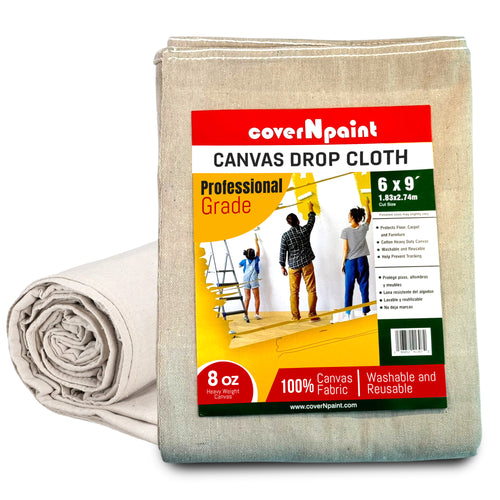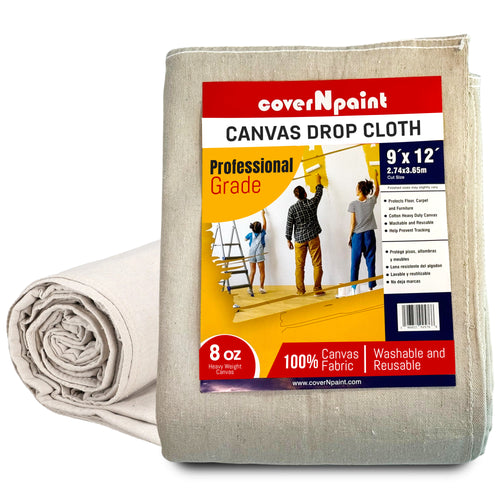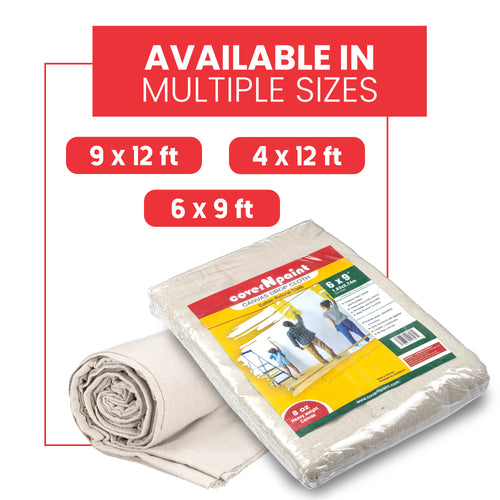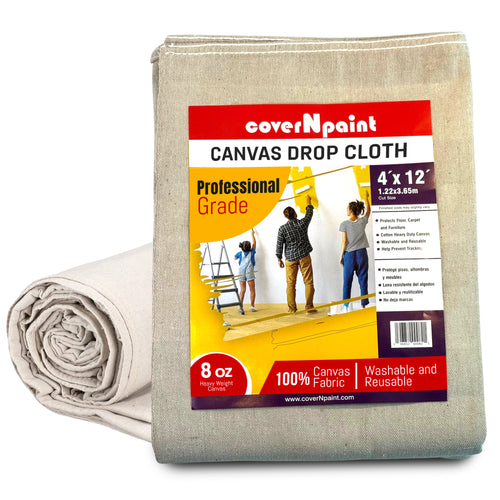Painting projects can be messy, and without proper protection, your floors, furniture, and walls can suffer. A painters drop cloth is a crucial tool that safeguards your space and makes cleanup easier. However, even the best canvas drop cloths or paint drop cloths will wear out quickly if not properly maintained.
In this guide, we’ll share actionable maintenance hacks that help DIY enthusiasts clean, store, and reuse drop cloths effectively, saving money and ensuring a smooth painting experience every time.

Choosing the Right Drop Cloth
The foundation of proper maintenance starts with selecting the right type of drop cloths for your project.
-
Canvas Drop Cloths: Durable, absorbent, and ideal for heavy-duty projects. They can be washed and reused multiple times.
-
Plastic or Vinyl Paint Drop Cloths: Lightweight, waterproof, and suitable for quick, one-time use.
Understanding the difference helps you anticipate cleaning needs and prevent damage. For those interested in more sustainable options, check out the blog on the eco-friendly advantages of using a canvas painters drop cloth to see why canvas is preferred for long-term projects.
Immediate Debris Removal
After finishing a painting session, the first step in prolonging the life of your drop cloth is removing debris and dust immediately.
-
Shake out the cloth outdoors to prevent dirt from embedding in the fibers.
-
Avoid folding or storing the drop cloth while it is still dirty, as this can set stains and create wear patterns.
Regular debris removal ensures your canvas drop cloth remains effective and reduces the frequency of deep cleaning.
Pre-Treat Paint Stains
Accidents happen, but pre-treating stains on your painters drop cloth can prevent permanent damage.
-
For fresh paint, dab with a damp cloth instead of rubbing to avoid spreading.
-
Apply a mild detergent or fabric-safe stain remover before washing.
-
For dried paint, gently scrape off excess paint with a plastic scraper before cleaning.
Tip: Different paints require different treatments. Water-based paints are easier to remove, while oil-based paints may need specialized cleaners.
Washing and Cleaning Techniques
Proper cleaning is the most important step in maintenance:
Canvas Drop Cloths:
-
Shake off debris before washing.
-
Wash with cold water using a gentle cycle or by hand.
-
Use mild detergents; avoid bleach.
-
Air-dry to prevent shrinkage and fabric weakening.
Plastic or Vinyl Paint Drop Cloths:
-
Wipe with a damp cloth or sponge.
-
Use warm soapy water for stubborn spots.
-
Rinse thoroughly and air-dry completely before storage.
Following these steps keeps your paint drop cloth clean, odor-free, and ready for the next project.
Drying and Folding
How you dry and fold your drop cloths affects their longevity:
-
Always air-dry in a ventilated area.
-
Avoid prolonged exposure to direct sunlight, which can weaken fibers.
-
Fold along natural seams, or roll the cloth to prevent creases.
Rolling your canvas drop cloth is often better for storage, keeping it smooth and ready for future use.
Layering for Protection
Using multiple layers when painting can save your drop cloths from excessive wear:
-
Place a canvas drop cloth on the bottom layer for absorption.
-
Add a plastic sheet on top for spill protection.
This method reduces the need for frequent washing while keeping your workspace protected.
Storage Tips
Proper storage keeps your drop cloths in top condition:
-
Keep them in a dry, cool place away from moisture and direct sunlight.
-
Avoid placing heavy items on top of stored clothes.
-
Store folded loosely or rolled to prevent permanent creases.
Consistent care ensures your drop cloths remain durable and functional for years.
Regular Inspection
Before each project, inspect your drop cloths for:
-
Holes or tears
-
Fraying edges
-
Thin or worn areas
Small repairs can prevent further damage and improve safety during painting.
Quick Maintenance Kit
DIYers who paint often can benefit from keeping a drop cloth maintenance kit:
-
Mild detergent or soap
-
Soft brush or sponge
-
Fabric-safe stain remover
-
Storage bag or container
Having these items on hand allows for quick touch-ups and extends the life of your drop cloths.
Attention to Small Details
Little practices can have a big impact on longevity:
-
Avoid stepping on folded or wrinkled areas.
-
Clean spills immediately.
-
Secure edges with painter’s tape to prevent slipping and reduce wear.

A Curiosity-Building Note
Many painters overlook simple techniques that can dramatically extend the life of a canvas drop cloth. Even small adjustments in folding, cleaning, or layering can save money and improve efficiency. CovernPaint has shared these expert tips to help both DIYers and professionals maximize the life of their drop cloths. Mastering these methods often surprises even the most experienced painters.
FAQs
1. How many times can I reuse a canvas drop cloth?
With proper cleaning and storage, a canvas drop cloth can be reused multiple times, making it a sustainable choice for DIY painting projects.
2. How do I remove dried paint from a painter's drop cloth?
Gently scrape off excess paint, then pre-treat with mild soap or a fabric-safe cleaner before washing. Avoid harsh chemicals that may damage the fabric.
3. Is it better to fold or roll a drop cloth for storage?
Rolling prevents creases and keeps the cloth smooth, extending its usable life.
4. Can I use bleach on canvas drop cloths?
No. Bleach can weaken fibers and shorten the lifespan of your drop cloth. Stick to mild detergents.
5. Should I layer my drop cloths during painting?
Yes. Using a canvas drop cloth underneath and a plastic sheet on top protects surfaces and reduces cleaning needs, prolonging the life of your materials.













